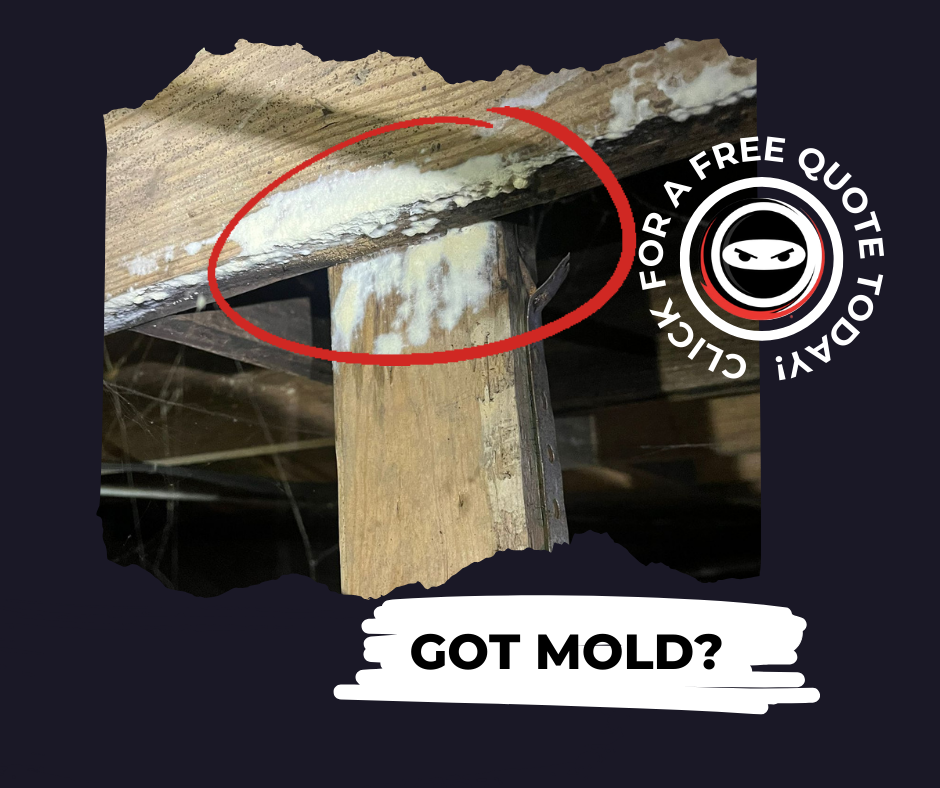The main reason most homeowners need crawl space mold removal is due to moisture and high humidity. Since water in air or liquid form can cause crawl space mold, I feel it should be the first thing addressed. Other crawl space repair contractors do not feel the same way and often ignore moisture control when it comes to mold protocols.
Let’s take a look at where the moisture comes from and what to do to address prior to mold removal.
High Humidity Causes Mold
Standing water and pipe leaks can cause mold but high humidity can be the most destructive force in the crawl space. High humidity can cause mold in the entire crawl space not just at the leak source. Both can be major problems but one is visible and the other invisible. Normally the invisible problem gets overlooked and therefore goes unaddressed.
Common Causes for High Humidity
The flooded crawl space or pipe leak can add to the humidity. Addressing standing water from foundation wall flooding or high water tables are vital along with controlling humidity. Pipe leaks can go unnoticed as well and often occur around toilets. The toilet wax ring can fail and create small amounts of water to infiltrate the subfloor and leak into the crawl space. This over time can become a huge problem and also adds to the humidity.
We often see insignificant leaks and small amounts of standing water add to the relative humidity of the crawl space. Mold forms around the leak source touching organic materials like wood and can create mold in areas the water does not touch due to high humidity. Install a humidity reader to keep an eye on humidity levels year round. Purchasing a moisture meter and checking around the toilets can help detect leaks quickly.
Steps for Mold Remediation!
If you discover a mold problem in your crawl space fix all plumbing leaks if present.
Install a water management system to address any standing water that is entering the crawl space. Ensure downspouts are moving water a minimum of 15 feet from the foundation. Check gutters for clogs to make sure all roof water is running away from foundation.
Install a french drain if needed to remove standing water in the yard or neighbor water running towards the home.
Install a dehumidifier to bring relative humidity and wood moisture levels to mold removal protocol levels. I recommend the relative humidity be below 55%. I recommend wood moisture levels below 20% but lower is better.

In Summary…
Mold removal in crawl spaces involves identifying and eliminating mold growth to ensure a healthy home environment. The process typically includes inspecting for moisture sources, such as leaks or poor ventilation, which contribute to mold growth. After identifying the problem areas, we use specialized equipment and protective gear to remove mold from surfaces.
This often involves cleaning and sanitizing affected areas, using anti-fungal treatments, and sometimes removing contaminated materials.
Additionally, steps are taken to prevent future mold growth, such as improving drainage, sealing vents, and installing dehumidifiers. Proper mold removal not only enhances air quality but also protects the structural integrity of the home and the health of its occupants.
Professional Basement Waterproofing and Crawl Space Encapsulation
Crawl Space Ninja is the professional choice for all things waterproofing! Our team has the experience and skill to help home owners with mold removal, crawl space encapsulation, crawl space insulation, vapor barriers, waterproofing, or controlling humidity in their crawl space. We can also help with exterior water and yard drainage.
For residents living in Georgia, Delaware, North Carolina, South Carolina, Tennessee, or Kentucky please contact us to schedule your moisture, drainage and leak assessment.